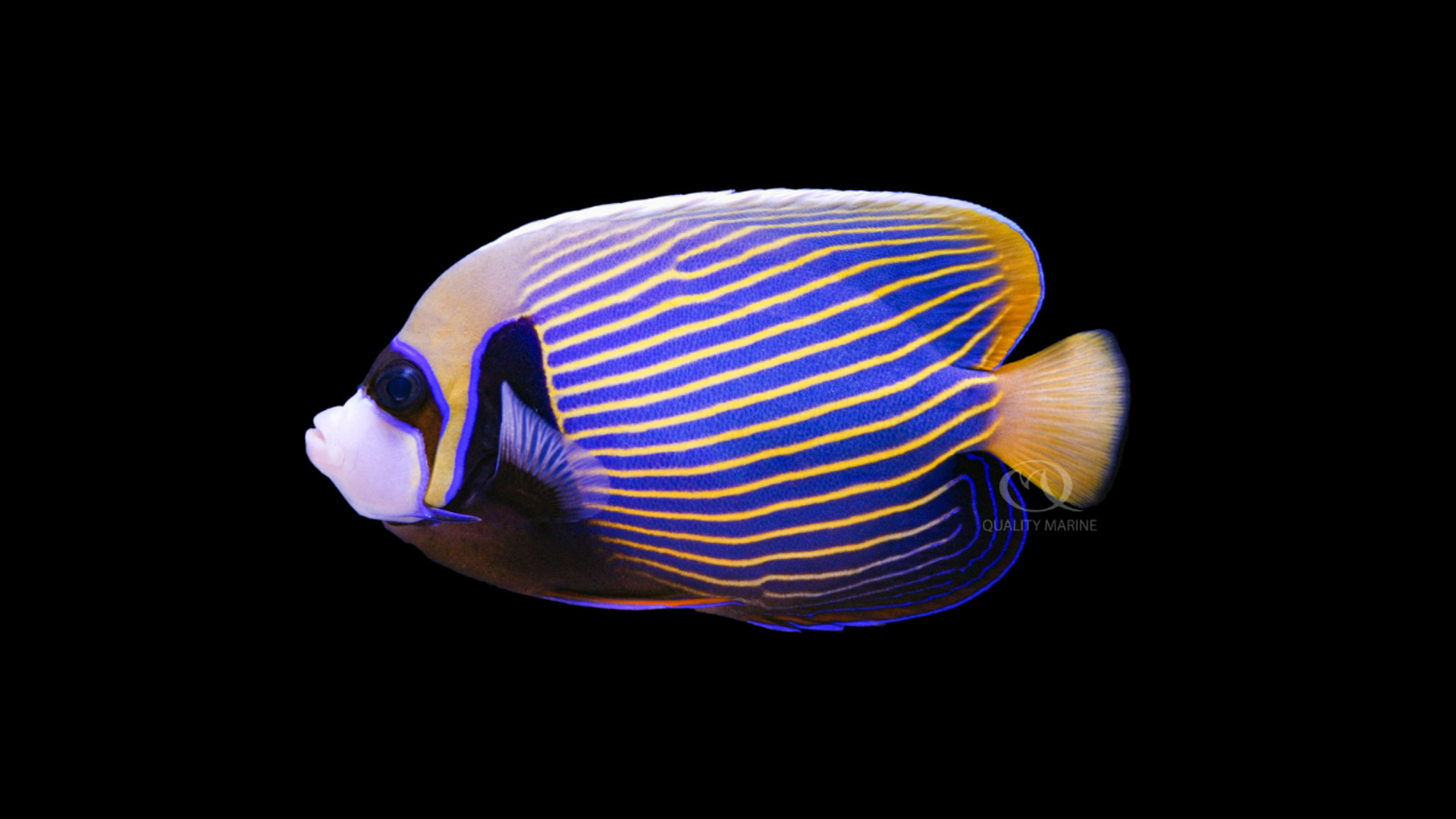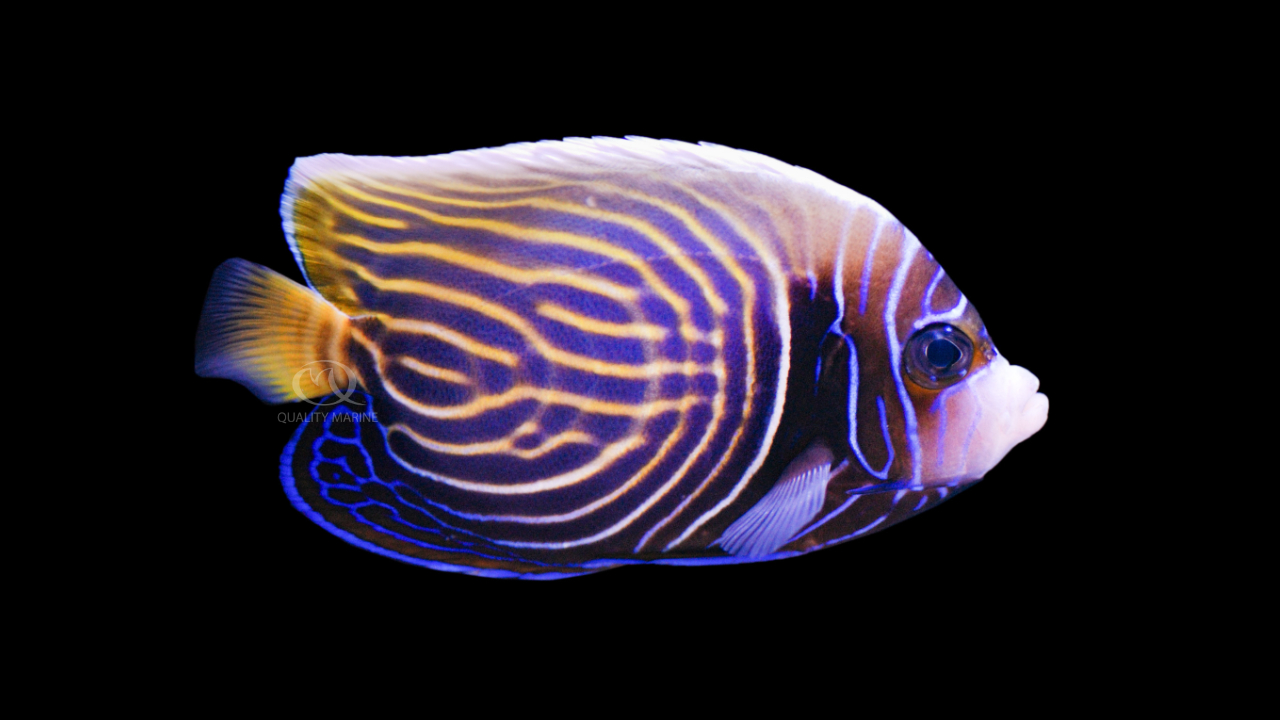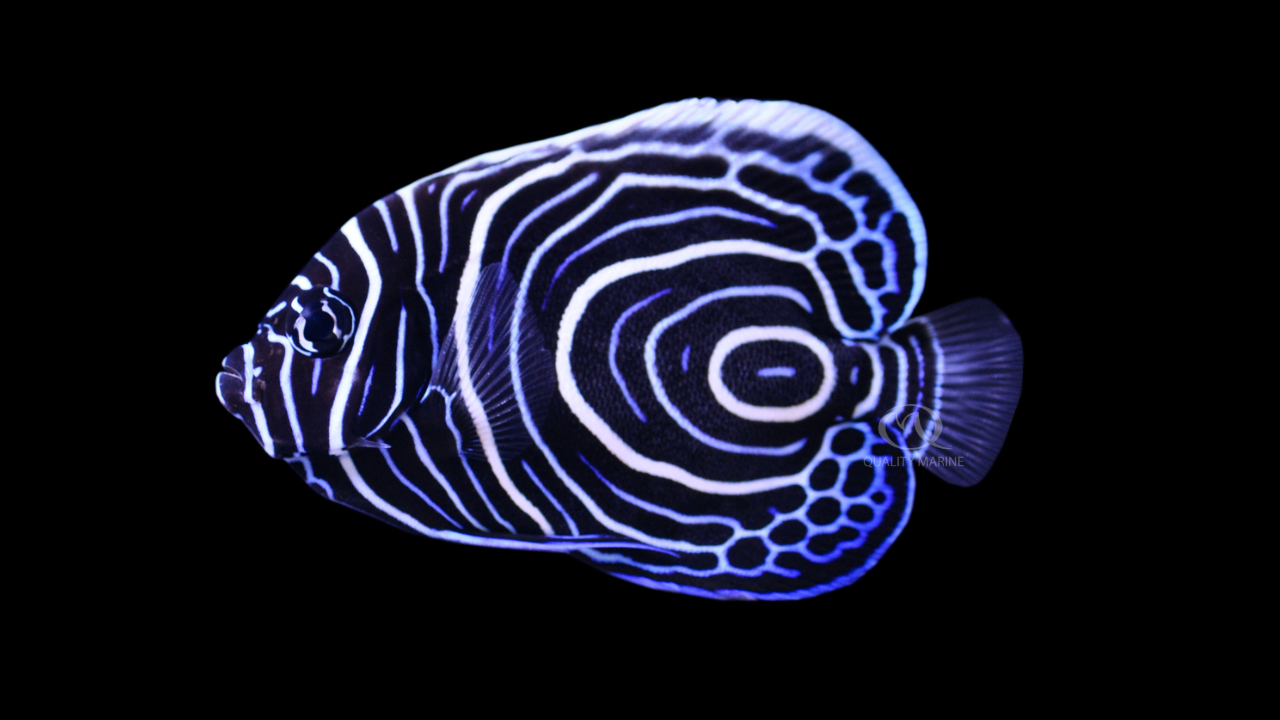The Emperor Of Angels

The fish we know best as the Emperor Angel deserves its name as an icon among all reef associated fish (and among saltwater aquarium enthusiasts). It has only a few names in English, also being called the Imperator Angel, a reference to its scientific name, Pomacanthus imperator. The word “imperator” translates from greek as “one who rules himself” and is often used to describe supreme rulers in ancient history, especially in references to ancient Rome. It is also uncommonly called the Imperial Angelfish, and it's pretty easy to see how that one came about once you understand the origin of the other names. Worldwide, Pomacanthus imperator has several dozen names, most of which translate to something similar to the familiar English common names.
Interestingly, while these fish do reach an “eatable” size at nearly 16 inches, they are almost never seen as a food fish, which means their popularity comes purely from them being gorgeous. They are seen in artwork and photos of coral reef scenes around the world and are relatively common additions to aquariums everywhere that marine fishkeeping is popular. Their stunning looks, general hardiness and interesting marking transformation make them one of the ultimate showpieces available to marine aquarium hobbyists the world round.
All the angels in the genus Pomacanthus are grazers, nibbling on nearly everything in their path as they swim along. While they seem to mostly consume sponges and tunicates, a vital part of their diet is also the wide variety small invertebrates living on and in those sponges. Likely because of this foraging style, they are found at the same shallow depths where this food is common, frequently on protected reefs with lots of coral growth where they are generally single or in pairs. Juveniles are usually found singly and are known to work as cleaner fish for much larger marine fish, removing parasites from reef visitors like Ocean Sunfish!

One of the striking features of Imperator Angels is the incredible coloration transformation they go through as they mature. If you look at the photos on our website, you'll see the juvenile is an intricately patterned fish, similar to many other juvenile Pomacanthus angels, listed here: https://www.qualitymarine.com/quality-marine/fish/angels/pomacanthus/imperator-juvenile-10053/ and we have listing for several stages in this development, as well as some single listings for regional color morphs. There is a great photo for a fully transformed adult on this listing: https://www.qualitymarine.com/quality-marine/fish/angels/pomacanthus/imperator-streamer-adult-10131/. The record size of this fish in the wild is very large, and it also attains a large size in captivity, commonly reaching a foot long (give or take) over their life (which can be ten years or more!)
Because of this size, and their active lifestyle, this is a fish that will need a large aquarium to house it until it reaches maturity. We suggest a minimum of 220 gallons and at least six feet in length, and obviously, bigger would be better. Other aquarium parameters should be familiar to everyone keeping marine aquariums. They are not an incredibly delicate fish, but this being said, they will be their healthiest, most brilliantly colorful selves in aquariums that are well maintained and stable. Shoot for specific gravity of at least 1.021 and up to 1.026. A good temperature for this fish is in the 75-degree Fahrenheit range, and a pH of 8 or so, and stable, will keep them happy for a good long time. Individual fish can be acclimated to salinities and temperatures that are cooler, down to 70 degrees or so.

Regardless of their somewhat picky wild diet, Imperator Angels are usually easily conditioned to take prepared foods, though some individuals can be food shy initially. Diet variety is very important for all Angelfish and Emperors are no exception; they will need a mix of high-quality foods that include a large proportion of sponge and algal matter. We feed them a variety of chopped, thawed seafood from Gamma Foods, including their vegetarian diet. We also feed them both pellets and shots from Nutramar of the Algae and Color Boost Variety. The most important aspect of keeping healthy angelfish is a complete diet, so don't neglect any aspect of their dietary needs. Avoid using land-based plant matter; you'll frequently come across advice saying to feed them blanched vegetables, and this should be avoided.
Many Pomacanthids have a reputation of boisterousness, and the Imperator is an interesting fish this way. They will be aggressive with other Angels but will mostly ignore other fish. Because they are large and active, we don't recommend keeping them with small, timid fish that may be scared into hiding through mealtimes. We also suggest avoiding overly aggressive fish like large triggers and puffers. Because of their wild diet preferences, these fish should not be kept in reef style aquaria. They may not necessarily target coral polyps, but they will sample them, often to the detriment or even death of the coral. Emperor Angels love sponges, bivalves and feather dusters, actively hunting and consuming them. Avoid keeping any of these you intend to have for more than a week.
As of right now, the vast majority of Angelfish are still wild caught, however, Bali Aquarich is successfully aquaculturing the Imperator Angel on a regular basis. This being said, they are a species with excellent wild reproduction, and sustainable harvest for aquarium keeping has been happening for decades. If and when such a specimen becomes available to the public, rest assured that Quality Marine will surely be there to source them for you! Pomacanthus imperator is a shockingly beautiful, sustainable choice when it comes to a display anchoring Angel in the home aquarium. If you're a home aquarist looking for a flagship fish, is a perfect showpiece. Ask your Local Fish Store about getting you one of these durable, gorgeous fish from Quality Marine.